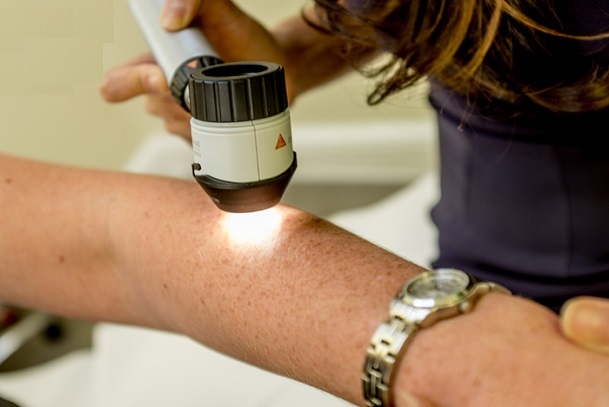 Wash your hands regularly and wear a face mask.
Learn more
Wash your hands regularly and wear a face mask.
Learn more

Skin cancer is a disease in which malignant (cancer) cells form in the tissues of the skin through the exposure to the ultraviolet radiation from the sun. Though not all skin cancers are dangerous or shows signs and symptoms, yet one can’t undermine the danger it poses when it reaches a more advance stage (i.e. the melanoma).
Managing skin cancer involves diagnosing, treating and preventing any form of skin cancer.
Treatment of Skin Cancer
There are various treatment options available for skin cancer and other form of precancerous skin lesions such as actinic keratoses are quite different depending on the size of the lesions, type or its depth. Skin cancer such as the basal cell carcinomas and squamous cell carcinomas which are quite or less dangerous do not usually require any form of treatment except for skin biopsy which requires the remove of any form of growing bump.
Also, there are also other treatment options for skin cancer that can be considered by an individual; and they include:
Prevention of Skin Cancers
It should be noted to most individuals that not all skin cancers are preventable, but there are various ways in which people can protect themselves against skin cancers. These can be done by following the following prevention tips:
Avoiding The Sun During Middays: People who tend to live in areas where there are high radiation from the sun e.g. Northern Nigeria states, the hours between 9am and 4pm when the sun’s rays are the strongest; activities during this hours should be limited so as to prevent against skin cancer. This is because the ultraviolet rays around this time are usually high, and there is no / little clouds to protect the body from sunburns caused by these rays.
Wearing of Protective Clothes: Individuals need to wear proper and well-woven clothes that protect the whole body from ultraviolet rays. Also the use of sun-glasses can help protect the eye and the face from excessive ultraviolet
Avoid Tanning Beds: Lights used in tanning beds emit ultraviolet rays and can increase one’s risk of skin cancer.
Skin Examination: Just like women self-examine their breasts for any abnormalities, there is a need to often examine the skin for any form of growth or changes in moles, freckles, bumps or birthmarks. This will help an individual report any form of changes in the skin to their doctors.
Be Cautious Of Sun-Sensitizing Medications: Some common prescription and over-the-counter drugs, including antibiotics, can make your skin more sensitive to sunlight. There is a need to inquire from medical practitioners especially pharmacists about the side effects of any drugs (medication used).
Prognosis
For non – melanoma skin cancers (basal cell carcinoma and squamous cell carcinoma), the prognosis is very good, due to the fact that both non – melanoma skin cancers are highly curable. In records by the World Health Organisation (WHO), no death has been recorded from individuals with basal cell carcinoma; and only few were recorded in the case of individuals with squamous cell carcinoma (especially individuals suffering from immunodeficiency diseases).
Early detections of skin cancers can lead to better outcomes, therefore it is best to self – examine one’s skin whenever there moles or spots which create suspicions, thereafter, seek a medical doctor’s advice on skin cancer screening.
Awareness is a key in identifying and treating skin cancers early.